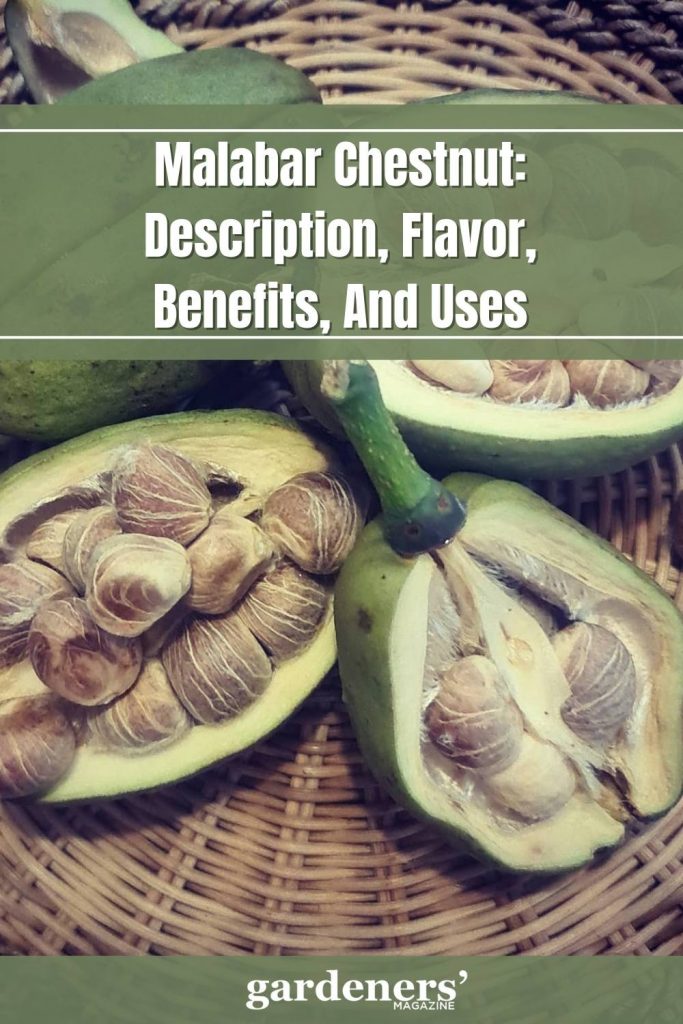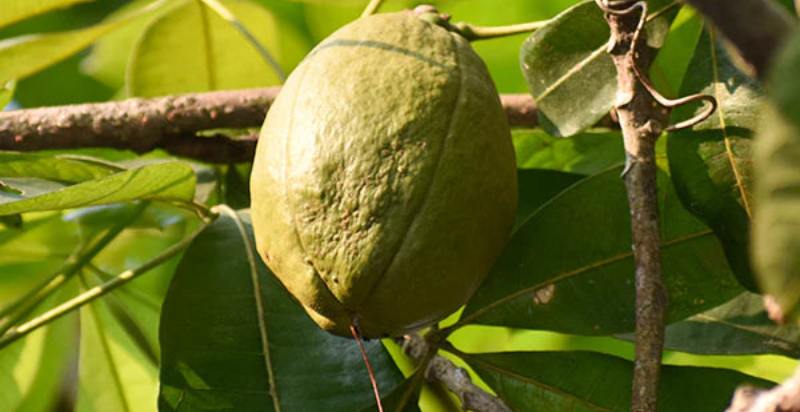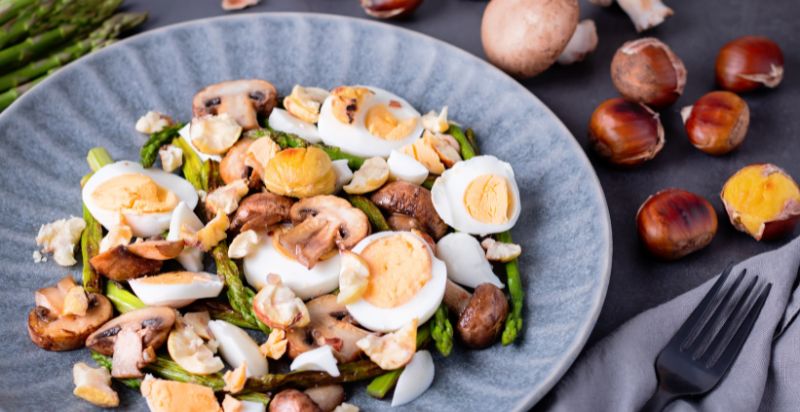Malabar chestnuts (Pachira aquatica) are a tropical tree species native to Central and South America. They grow up to 30 feet tall and can live for decades, producing white flowers in summer and large edible nuts in winter. The nuts are encased in a brown leathery husk that splits open when ripe, revealing a white kernel. The kernels have a sweet flavor and can be eaten raw or cooked. Here is everything you need to know about these tasty treats.
What are Malabar Chestnuts?
Malabar chestnuts are a tropical tree species belonging to the genus Pachira. They are native to Central and South America and can be found in warm, wet climates. The trees grow up to 30 feet tall and have large green leaves. In the summer, Malabar chestnut trees produce white flowers that eventually become edible nuts.

History and Origin of the Malabar Chestnuts:
The Malabar chestnut is a tropical tree found primarily in Central and South America, with some varieties also found in Mexico, West Africa, and parts of the Caribbean. Native to India, it is believed to have been cultivated by ancient Indian cultures for its edible nuts. The Malabar chestnut tree was first introduced to Europe in the 16th century. Since then, it has become a popular ornamental tree in many countries worldwide.
The Malabar chestnut tree is an evergreen, growing up to 50 feet tall with glossy dark green leaves that turn yellow and red in autumn. The flowers are small and white and often produce nuts ranging in size from small berries to large, round nuts. The flavor of the nut makes it a popular snack or ingredient for desserts.
The Malabar chestnut tree is also valued for its timber, used mainly in furniture and boat building. It has been used as an ornamental tree since colonial times, often planted in public gardens and parks. Today, the Malabar chestnut is popular for landscaping due to its attractive foliage and fragrant flowers.
Health Benefits of Malabar Chestnut:
Malabar chestnuts are an excellent source of essential nutrients, vitamins, and minerals. They are high in fiber, protein, and healthy fats. Malabar chestnuts contain several antioxidants that can help protect against free radical damage and improve overall health. The nuts also contain magnesium, potassium, phosphorus, zinc, and iron, which are important for bone health.
The nuts are also believed to have anti-inflammatory properties, which can help reduce the risk of chronic conditions such as heart disease, diabetes, and cancer. Malabar chestnuts may also aid in weight loss as they contain a good amount of fiber, which helps keep you feeling full for longer periods.
Where are Malabar Chestnuts: Grown and Harvested?
Malabar chestnuts are grown and harvested mainly in India, particularly in the Western Ghats of Kerala, Karnataka, and Tamil Nadu. The trees grow best in warm tropical climates with plenty of rainfall. These nuts can also be found growing wild in some areas.
Harvesting is done by hand during the dry season when the fruits are fully ripe. The nuts are then dried, shelled, and processed for consumption.

Flavor Profile of the Malabar Chestnuts:
The Malabar chestnuts have a sweet and nutty flavor with hints of cocoa. They are crunchy on the outside and creamy on the inside, making them an ideal dessert snack or ingredient.
Where to Find the Best Quality Malabar Chestnuts?
The best quality Malabar chestnuts can be found in online retailers and specialty stores. They are also available at some local grocery stores. When shopping for the freshest and highest quality chestnuts, look for ones with a glossy, bright-brown hue without blemishes on the shell. Avoid any nuts that appear dried out or cracked.
Additionally, when you open the package, chestnuts should have a sweet, nutty scent. It’s important to look for Malabar chestnuts that are organic and sustainably sourced from certified suppliers for maximum freshness and flavor. Buying locally-sourced products minimizes your environmental impact and ensures you get the freshest ingredients. You can also buy chestnuts in bulk to save money and have a ready supply for your culinary projects.
How to Store Malabar Chestnuts?
Harvested Malabar chestnuts can be stored in a cool, dry place for up to 2 months. If you plan on storing the chestnuts for longer than two months, it is best to freeze them.
To freeze, spread the shelled nuts on a baking sheet and place them in the freezer for about an hour until they are solid. Place frozen chestnuts in an airtight container or zip-top bag and store them in the freezer for up to 6 months.
To thaw, place the frozen nuts on a baking sheet and allow them to warm to room temperature before use. Malabar chestnuts will remain fresh for up to six months when stored properly.
How to Use Malabar Chestnuts in Recipes?
Malabar chestnuts are highly versatile and can be used in various recipes. Here are some delicious ideas to get you started:
- Roasted Malabar Chestnut Soup – Start by roasting the raw chestnuts lightly coated with olive oil and salt. Once they’re nice and crispy, combine them in a blender with vegetable broth, onions, garlic, thyme, and bay leaves. Puree until smooth and season to taste.
- Malabar Chestnut Salad – Mix the roasted chestnuts in a bowl with fresh spinach, feta cheese, walnuts, and dried cranberries. Dress with olive oil, balsamic vinegar, and honey.
- Malabar Chestnut Risotto – Start by sautéing onions and garlic in a wide pot before adding the chestnuts and Arborio rice. Slowly add broth as you stir the risotto until it becomes creamy and cooked. Add a pinch of nutmeg at the end for extra flavor.
- Malabar Chestnut Ragu – Start by sautéing bell peppers, onions, and garlic in a large skillet before adding chopped chestnuts and diced tomatoes. Simmer until everything is cooked, and serve over pasta or polenta with freshly grated Parmesan cheese.

Conclusion
Malabar chestnuts are a delicious and versatile ingredient used in many different recipes. From soups to salads and risotto, the possibilities are endless. When shopping for chestnuts, look for ones with a glossy shell and sweet aroma. Store them properly so they stay fresh for up to 6 months. With a few simple tips, you can create delicious recipes with Malabar chestnuts. Happy cooking.
- Everything You Wanted to Know About Red Tamarillos - June 2, 2025
- A Guide to Tulips: Everything You Need to Know & More… - June 2, 2025
- Guanabana: Description, Flavor, Benefits, And Uses - May 27, 2025

1 thought on “Malabar Chestnut: Description, Flavor, Benefits, And Uses”
Comments are closed.